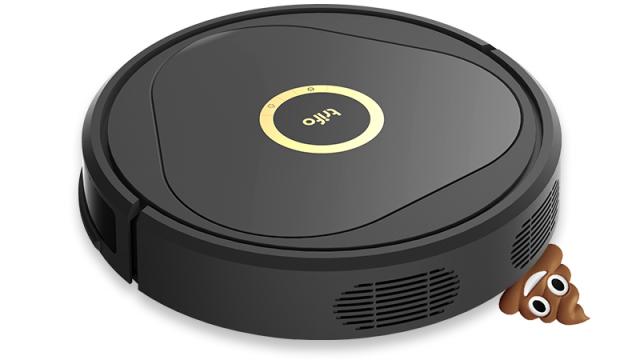The biggest problem with even the smartest robovacs is that they’re not actually that smart. They can navigate your home and avoid collisions with large pieces of furniture, but smaller obstacles, like hazards left behind by pets, they’ll simply plow right through creating even larger messes. Lucy, a new robot vacuum from a company called Trifo, thinks an extra camera, and AI powered smarts, could finally put an end to encounters of the turd kind.
Revealed today just ahead of CES 2020 getting under way in Las Vegas next week, Trifo’s Lucy distinguishes itself from an ever-growing list of robotic house cleaners with several features that could potentially improve its independence. That starts with a pair of cameras that should see the world in 1080p, even at night, thanks to a depth sensor that can detect objects and obstacles with minimal ambient light.
Being able to accurately gauge distances would also bolster Lucy’s ability to intelligently map a room which, in turn, should improve cleaning efficiency. If it knows where it’s already been while cleaning floors than it won’t go over the same areas twice, so it’s not wasting battery life. Using AI-powered image recognition Lucy’s cameras can also supposedly recognise objects like beds allowing the robovac to automatically divide a house into pre-labelled rooms based on the furniture detected. This then allows users to specify which room needs cleaning, either using an accompanying mobile app, or through voice commands courtesy of Amazon’s Alexa smart assistant. It also makes it easier to designate areas the robovac should avoid without having to install unsightly wires or infrared barriers around a home.
Lucy’s 5,200 mAh battery promises runtimes of up to 120 minutes, but that will vary on the level of suction selected, the terrain it has to navigate (maybe it’s time to finally ditch the shag carpeting), and the amount of dirt it’s already picked up, hauled around, and is waiting to empty. More than likely, you’ll see a full two hours of performance while Lucy is in its autonomous surveillance mode, serving as a roaming security camera for your home that lets you remotely select areas to keep an eye on while you’re out.
[referenced url=” thumb=” title=” excerpt=”]
Most impressive, however, are Lucy’s claimed obstacle avoidance capabilities. Its cameras and sensors should be able to spot objects as low as an inch off the ground, so items like slippers, Hot Wheels toys, or books, won’t get run over and chewed up by the robovac’s spinning brush bar. It also means that, at least for larger pets, Lucy could have a better chance of spotting poop before dragging it across the floor as it continues its routine.
Lucy is en route for some time in 2020, and will be priced at $US800 ($1,140), which puts it on the more expensive end of robot vacuums. You can get Shark’s most recent robovac which also includes a self-emptying charging base for about half that price. However, as anyone with a robovac already roaming their floors will attest, improved smarts could be the game-changing upgrade these machines are more desperately in need of.
